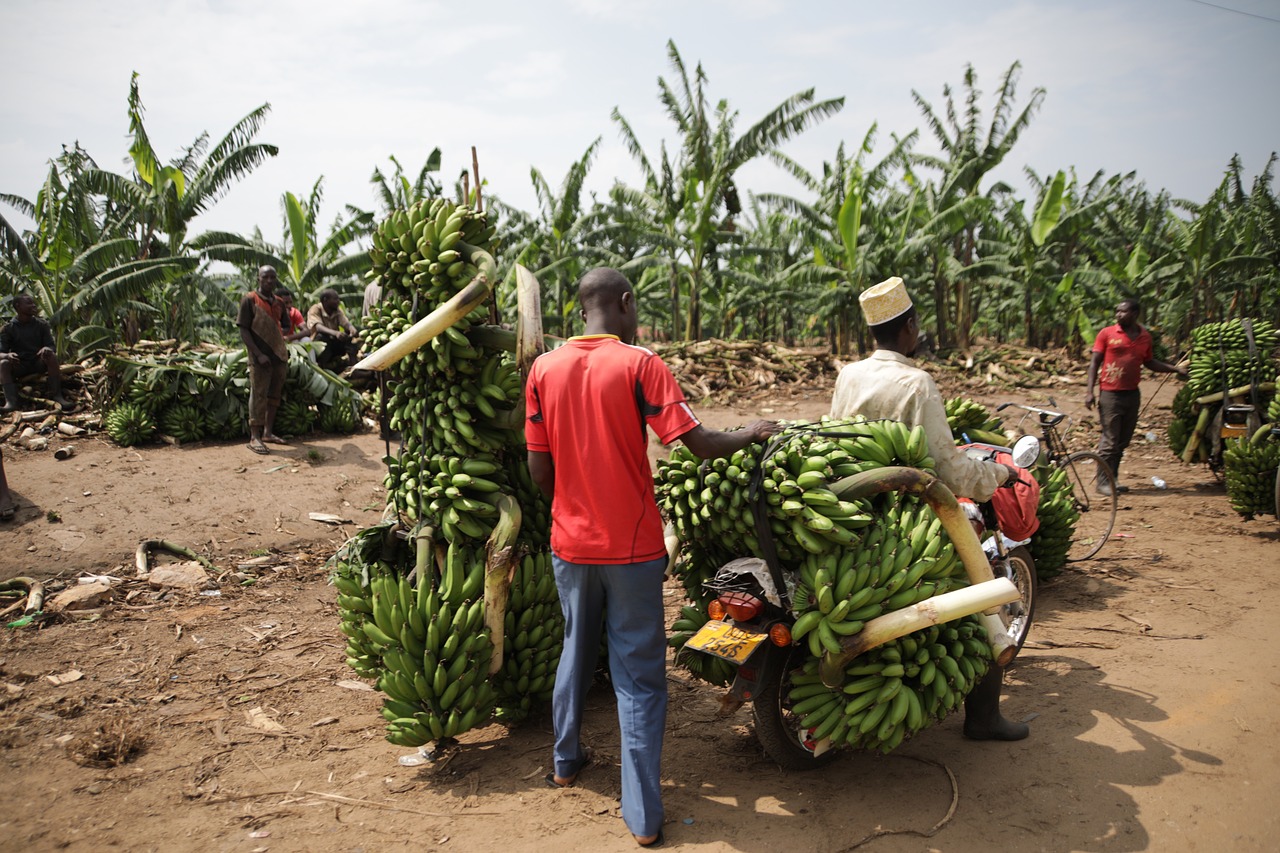The Role of the Silk Road in Economic Exchange
The Silk Road holds a pivotal role in the history of economic exchange, serving as a vital artery that connected the East and the West through a network of trade routes. This ancient pathway not only facilitated the movement of goods but also acted as a conduit for the exchange of ideas, cultures, and technologies, shaping the course of history.

Historical Background of the Silk Road
Exploring the historical significance and modern implications of the Silk Road in facilitating trade and cultural exchange between East and West.
The Silk Road holds a rich historical background that dates back to ancient times, serving as a network of interconnected trade routes that spanned over 4,000 miles. Originating in China, the Silk Road extended through Central Asia, the Middle East, and reached as far as the Mediterranean region. This intricate web of pathways enabled the exchange of goods, ideas, and cultures between the East and the West, laying the foundation for global trade as we know it today.

Impact on Global Trade Routes
The Silk Road, with its vast network of trade routes spanning from Asia to Europe and Africa, had a profound impact on global trade routes. By connecting distant regions and facilitating the exchange of goods, ideas, and technologies, the Silk Road revolutionized international commerce.
Imagine a web of interconnected pathways, bustling with merchants carrying exotic spices, precious silks, and innovative inventions. The Silk Road was more than just a physical route; it was a conduit for cultural diffusion and economic prosperity.
Traversing through diverse landscapes and climates, traders faced numerous challenges along the Silk Road. From navigating treacherous mountain passes to evading bandits lurking in the shadows, the journey was fraught with risks and uncertainties.
Despite the obstacles, the rewards of trading along the Silk Road were immense. Merchants not only profited from the exchange of goods but also gained knowledge of new technologies and practices that transformed societies along the route.
The Silk Road was not just a commercial highway; it was a melting pot of cultures, religions, and languages. As goods traveled from one civilization to another, they carried with them the seeds of cultural exchange, fostering a rich tapestry of diversity.
Through the Silk Road, innovations such as papermaking, printing, and gunpowder spread like wildfire, igniting intellectual revolutions and propelling civilizations to new heights of progress and development.
In the modern era, the spirit of the Silk Road lives on through initiatives like the Belt and Road Initiative, which seek to revive the ancient trade routes and promote connectivity and cooperation among nations in a globalized world.
However, the legacy of the Silk Road also raises important questions about its environmental impact. The extensive trade along the route led to deforestation, desertification, and the introduction of invasive species, leaving a lasting mark on the natural landscapes it traversed.
As we look to the future, the Silk Road presents both opportunities and challenges for sustainable economic growth and cultural exchange. By harnessing its historical legacy, we can build bridges between nations, promote regional integration, and pave the way for a more interconnected world.

Cultural Exchange Along the Silk Road
Exploring the historical significance and modern implications of the Silk Road in facilitating trade and cultural exchange between East and West.
Understanding the origins and development of the ancient trade routes that connected Asia, Europe, and Africa, promoting economic interactions and cross-cultural exchanges.
Examining how the Silk Road revolutionized international commerce by enabling the flow of goods, ideas, and technologies across vast distances, shaping the global economy.
The Silk Road was not just a pathway for goods but also a melting pot of cultures, languages, religions, arts, and philosophies. It served as a vibrant hub where East met West, fostering multiculturalism and diversity along its routes. Imagine traders from different lands exchanging not only merchandise but also stories, beliefs, and traditions. It was a journey not just for the body but for the mind and soul, where each stop brought a new perspective and a deeper understanding of the world.
Exploring how the Silk Road facilitated the spread of innovations such as papermaking, printing, and gunpowder, contributing to the advancement of civilizations along its path.
Discussing the risks and difficulties encountered by merchants, including harsh climates, political instability, and bandit attacks, in their pursuit of trade along the Silk Road.
Analyzing the contemporary efforts to revitalize the Silk Road through infrastructure projects like the Belt and Road Initiative, aiming to enhance connectivity and economic cooperation among nations.
Evaluating the ecological consequences of Silk Road commerce, including deforestation, desertification, and the introduction of invasive species, on the natural landscapes along its routes.
Considering the potential opportunities and challenges in leveraging the historical legacy of the Silk Road to promote sustainable economic growth, regional integration, and cultural exchange in the 21st century.

Technological Innovations and Knowledge Transfer
The Silk Road played a pivotal role in facilitating the exchange of not only goods but also technological innovations and knowledge between the East and the West. This ancient network of trade routes acted as a conduit for the transmission of ideas, inventions, and expertise, contributing to the advancement of civilizations along its path.
One of the most significant technological innovations that spread through the Silk Road was the art of papermaking. Originating in China, the technique of making paper from pulp eventually reached the Middle East and Europe, revolutionizing communication and record-keeping. The dissemination of papermaking technology through trade along the Silk Road paved the way for the widespread use of paper in writing and printing.
Furthermore, the invention of printing, attributed to the Chinese artisan Bi Sheng, also found its way to the West via the Silk Road. The ability to mass-produce written materials through printing presses accelerated the spread of knowledge and literacy, shaping the intellectual landscape of societies connected by the Silk Road.
Another notable innovation that traveled along the Silk Road was gunpowder. Initially developed in China for fireworks and later military applications, gunpowder eventually made its way to the Middle East and Europe through trade routes. The introduction of gunpowder revolutionized warfare and had far-reaching consequences on the geopolitical dynamics of the regions it reached.
The Silk Road served as a conduit not only for tangible technologies but also for the transfer of scientific knowledge and mathematical concepts. Scholars and mathematicians exchanged ideas and theories across cultures, contributing to the development of disciplines such as astronomy, medicine, and engineering. The cross-fertilization of intellectual pursuits along the Silk Road fostered a spirit of collaboration and innovation that transcended geographical boundaries.

Challenges and Obstacles Faced by Silk Road Traders
Silk Road traders faced a myriad of challenges and obstacles as they traversed the vast expanse of this ancient trade route. One of the most daunting hurdles was the unpredictable and harsh climates along the Silk Road. From scorching deserts to freezing mountain passes, traders had to navigate through extreme weather conditions, risking their lives and cargo in the process.
Political instability was another significant challenge that plagued Silk Road traders. The shifting power dynamics among empires and kingdoms often led to conflicts and wars, disrupting trade routes and endangering merchants. Navigating through regions with ongoing political turmoil required a delicate balance of diplomacy and caution.
Bandit attacks were a constant threat to Silk Road traders, lurking in the remote and isolated stretches of the route. These outlaws would ambush caravans, plundering goods and valuables, posing a constant risk to the livelihoods of merchants. The need for protection and vigilance against such attacks added another layer of complexity to the already perilous journey.
Furthermore, the lack of established infrastructure and amenities along the Silk Road presented logistical challenges for traders. The absence of proper roads, rest stops, and reliable sources of food and water made the journey arduous and uncertain. Traders had to rely on their resourcefulness and adaptability to overcome these obstacles and ensure the successful completion of their trade missions.
In conclusion, Silk Road traders faced a multitude of challenges ranging from natural hazards and political unrest to security threats and logistical difficulties. Despite these adversities, their resilience and determination to engage in cross-border trade and cultural exchange played a pivotal role in shaping the history and legacy of the Silk Road.

Revival of the Silk Road in the Modern Era
As we step into the modern era, the Silk Road is experiencing a remarkable revival through ambitious infrastructure initiatives like the Belt and Road Initiative. This contemporary effort aims to rejuvenate the ancient trade routes by enhancing connectivity and fostering economic cooperation among nations spanning Asia, Europe, and Africa. The Belt and Road Initiative, proposed by China, seeks to build a network of roads, railways, ports, and pipelines that will link regions and facilitate seamless trade and cultural exchange.
One of the key aspects of the Silk Road revival in the modern era is the focus on digital connectivity and e-commerce. With the advent of technology, the Silk Road is not just about physical trade routes but also virtual corridors that enable businesses to connect and engage in cross-border transactions. E-commerce platforms have opened up new avenues for small and medium enterprises to participate in international trade, leveraging the historical legacy of the Silk Road in a digital age.
The modern revival of the Silk Road also emphasizes sustainable development and green initiatives. As concerns about environmental impact grow, projects under the Belt and Road Initiative are increasingly incorporating eco-friendly practices to mitigate the adverse effects of infrastructure development. From renewable energy projects to biodiversity conservation efforts, the new Silk Road envisions a more sustainable approach to economic growth and connectivity.
Furthermore, the cultural aspect of the Silk Road revival is not overlooked in the modern era. Initiatives promoting cultural exchanges, educational programs, and artistic collaborations aim to revive the spirit of multiculturalism and diversity that characterized the ancient Silk Road. By fostering mutual understanding and respect among diverse communities, the modern Silk Road seeks to bridge cultural gaps and promote harmony in a globalized world.

Environmental Impact of Silk Road Trade
The has been a topic of significant concern due to the extensive commercial activities and transportation along the ancient trade routes. The Silk Road trade network, spanning vast distances and diverse landscapes, has left a lasting imprint on the environment through various means.
One of the primary environmental impacts of the Silk Road trade was deforestation. The demand for timber to construct ships, caravans, and buildings led to widespread deforestation along the trade routes. Forests were cleared at an alarming rate to meet the needs of the growing trade network, resulting in habitat loss and ecological imbalance.
Another notable consequence of Silk Road commerce was desertification. The constant movement of caravans and livestock across arid regions contributed to soil erosion and the expansion of deserts. Overgrazing and unsustainable agricultural practices exacerbated the process of desertification, transforming once fertile lands into barren wastelands.
The introduction of invasive species along the Silk Road also had a detrimental impact on local ecosystems. As goods and commodities were transported across continents, non-native species were inadvertently introduced to new environments. These invasive species often outcompeted native flora and fauna, disrupting the delicate balance of ecosystems and threatening biodiversity.
Moreover, the Silk Road trade routes were accompanied by the spread of pollution. The constant movement of caravans, ships, and traders led to the accumulation of waste and pollutants along the routes. Oil spills, garbage disposal, and industrial activities contributed to environmental degradation, contaminating water sources and soil along the Silk Road.
Despite its historical significance in facilitating trade and cultural exchange, the Silk Road's environmental impact underscores the importance of sustainable practices in modern-day commerce. By learning from the past and implementing eco-friendly measures, the revival of the Silk Road in the contemporary era can strive to mitigate environmental harm and promote a harmonious relationship between economic development and environmental conservation.

Future Prospects for Silk Road Development
The future prospects for Silk Road development hold immense potential for reshaping global economic dynamics and fostering cross-border cooperation in the 21st century. As nations seek to capitalize on the historical legacy of the Silk Road, new opportunities emerge for sustainable growth and regional integration. With advancements in transportation and communication technologies, the revival of ancient trade routes presents a promising avenue for enhancing connectivity and promoting cultural exchange.
One key aspect of the future development of the Silk Road lies in leveraging digital infrastructure to streamline trade processes and enhance logistical efficiency. The integration of e-commerce platforms and digital payment systems can facilitate smoother transactions and reduce barriers to cross-border trade. By embracing technological innovations, countries along the Silk Road can unlock new avenues for economic collaboration and market expansion.
Moreover, the emphasis on sustainable development along the Silk Road holds significant promise for mitigating environmental impact and promoting eco-friendly practices. Initiatives aimed at reducing carbon emissions, conserving natural resources, and preserving cultural heritage sites can contribute to the long-term viability of Silk Road trade routes. By incorporating principles of environmental stewardship into development strategies, nations can ensure the preservation of the unique landscapes and ecosystems traversed by the ancient Silk Road.
In addition, the future of Silk Road development envisions enhanced connectivity through infrastructural projects that promote trade facilitation and economic cooperation. Investments in transportation networks, energy corridors, and telecommunications infrastructure can bolster cross-border connectivity and foster greater economic interdependence among participating nations. By building physical and digital linkages, countries can create a more integrated and resilient Silk Road network that transcends geographical boundaries.
Overall, the future prospects for Silk Road development offer a compelling vision of enhanced regional cooperation, sustainable growth, and cultural exchange on a global scale. As stakeholders collaborate to realize the full potential of this historic trade route, opportunities abound for forging new partnerships, fostering innovation, and building a more interconnected world that honors the legacy of the Silk Road.
Frequently Asked Questions
- What is the significance of the Silk Road in history?
The Silk Road played a crucial role in connecting civilizations and facilitating trade between the East and West, contributing to the exchange of goods, ideas, and cultures.
- How did the Silk Road impact global trade routes?
The Silk Road revolutionized international commerce by enabling the flow of goods, technologies, and knowledge across vast distances, shaping the global economy and promoting cultural exchange.
- What were the challenges faced by Silk Road traders?
Merchants traveling along the Silk Road encountered various obstacles such as harsh climates, political instability, and the threat of bandit attacks, making their journeys perilous yet rewarding.
- What is the modern relevance of the Silk Road?
In the modern era, efforts like the Belt and Road Initiative aim to revitalize the Silk Road by enhancing connectivity and economic cooperation among nations, fostering development and cultural exchange.
- How did the Silk Road impact technological innovations?
The Silk Road facilitated the spread of innovations such as papermaking, printing, and gunpowder, contributing to the advancement of civilizations and the exchange of knowledge along its routes.



















